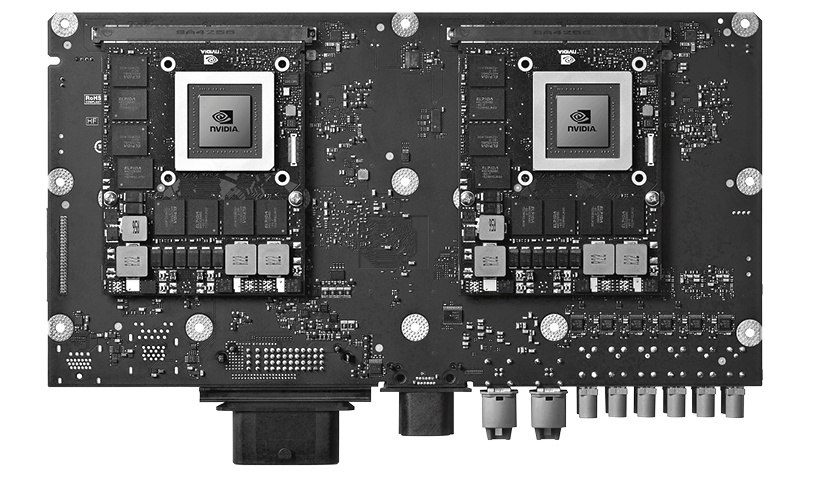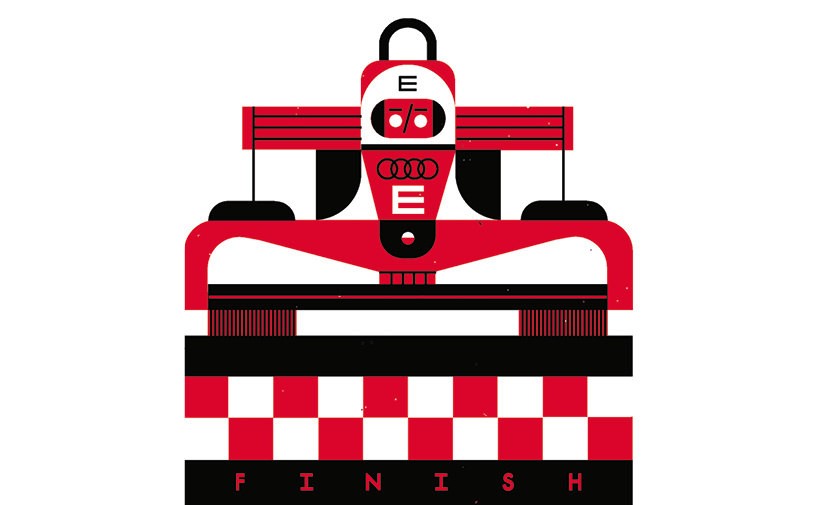
Racing algorithms
The first racing series for autonomous vehicles, Roborace is about so much more than just showcasing the latest digital technology. It opens the door to the future of the automobile.
Angus Frazer (copy), Robert Grischek (photo)

Ten cars roll onto the racetrack and take up their positions at the start. No rumbling engines disturb the silence. The signal turns green. Five cars race clockwise around the track while the other five make their laps in the opposite direction. The electrically powered motors propel the cars to speeds of up to 320 kilometers per hour before they meet at an extremely tight corner halfway round the track. At this point, the two sets of five cars are racing head on toward each other. But the dreaded prospect of a massive pile-up doesn’t materialize. Elegantly dodging each other, the racers avoid collision at breathtaking speeds by mere millimeters. What sounds like utter madness may be a very real possibility for the not-too-distant future. That’s because the race cars are self-driving—no human sits behind the wheel. At least that’s the vision for Roborace in Banbury, a town 120 kilometers northwest of London. Russian businessman Denis Sverdlov established the company with finance from his Kinetik investment fund, which is valued at USD 500 million.
Intended as a supporting series to the FIA Formula E, Roborace aims to be the first international championship for autonomously driven cars. Roborace cars—that is, both the DevBot development vehicle, which can be operated by either a human driver or an artificial intelligence system and the driverless Robocar without a cockpit or steering wheel—have already performed on racetracks in public. So far, the company has three DevBot cars and two Robocars in addition to two non-roadworthy Robocars that were built purely for demonstration purposes. A full fledged racing series would only be conceivable in three to five years’ time at the earliest. But Roborace doesn’t just plan to serve up high-speed driverless action. As Chief Strategy Officer and UK native Bryn Balcombe explains, “Roborace rests on three developmental pillars—electric mobility, networking technologies and autonomous driving. The challenge the series faces is finding the middle ground between sporting entertainment and developing autonomous driving technology that’s truly relevant to everyday life.”


Customarily, motorsport at its highest level paves the way for automotive technology in “conventional” cars. Yet Balcombe, who has pursued a career almost exclusively in Formula 1, strongly believes that this no longer applies today. While electronic driving aids are prohibited in motorsport, it’s precisely this type of technology that needs to be advanced for autonomous driving. “Roborace is a platform on which the technology necessary for autonomous driving—technology that will make our roads far safer in the future—can be tested,” he explains. Perhaps, as a result, car manufacturers will eventually enter their own vehicles in the series. At first, however, Roborace will provide the hardware while the various teams supply their own software—much as is the case in Formula E. Sounds like a championship for programmers. Balcombe disagrees. “The best way to think of Roborace is as a drivers’ championship—even though in this instance, of course, there are no drivers. Artificial intelligence (AI) makes all the difference, since it’s the caliber of the software that determines which team triumphs—especially when all Robocars are otherwise identical.” When it comes to the different software sets for autonomous driving, Balcombe is confident that they will produce very diverse driving styles. “The software system’s performance varies, above all because machine learning plays a role here. Although we are all bound by the same rules, people, too, have different driving styles. It’s the same with artificially intelligent cars. I believe that carmakers are going to develop their brand identities far beyond vehicle shape and design.” You’d think that a world of autonomous driving would send shivers down the spines of people like Lucas di Grassi who earn their living as a racing driver. But the Brazilian, Formula E Audi driver and reigning world champion, has a different take: “While Roborace will never replace motorsport, we still need a racing series to push the technological envelope as regards autonomous driving, networking and electric drives.” Fully convinced of the autonomous racing series’ potential, Lucas di Grassi has accepted the post as Roborace CEO.
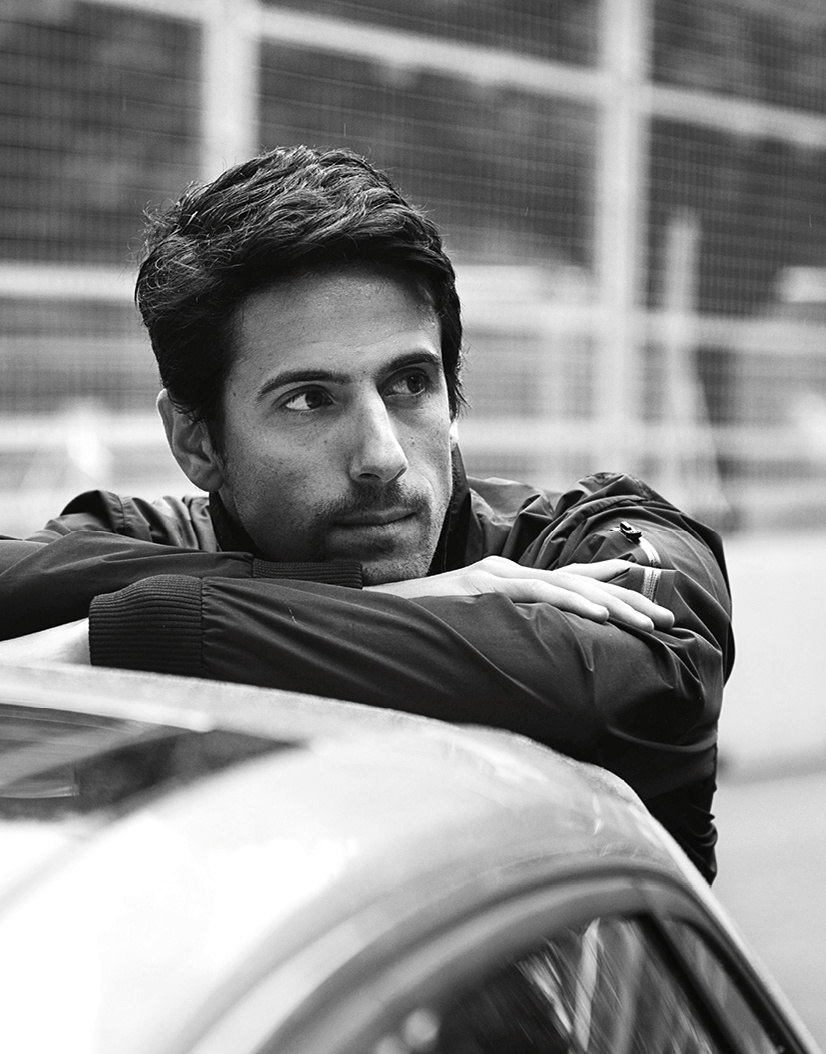
As of last year, the Audi pilot and reigning Formula E champion is also CEO of Roborace. He is very excited about the future of the autonomous racing series: “There’s a physical limit to how fast the human eye can relay information to the brain and the brain in turn passes on instructions to the hands or feet. That caps what even the world’s best racing drivers are capable of. But today’s computers are already capable of responding 200 times faster than a human. The combination of human and machine could lead to an unexpected, bright future for both, and that’s including driving at speeds never before thought possible.”

The designer has previously worked for Audi and created sci-fi cars for Hollywood blockbusters. He says of the Robocar: “The core of the car is a torpedo-shaped fuselage which houses everything from the impact structures to the battery and artificial intelligence. The flaring over the wheels is not just for aggressive looks, it also generates downforce. In designing a car, I always imagine I am working on a skeleton. You pull the skin over it, and make sure that some of the bones and joints poke through in a very athletic fashion.”
Doesn’t that amount to something of a betrayal of motorsport’s die-hard fans? “Not at all. People today still get excited about horse racing even though it’s been a long time since we used horses to get from A to B. I also doubt that anyone has stopped playing chess just because the supercomputer Deep Blue beat Garry Kasparov in New York in 1997. So why should we turn our backs on motorsport just because racing cars piloted by artificial intelligence can go faster than with a human driver? But are we really likely to reach the point where autonomous cars can outperform racing drivers on the circuit? “It’s already happened. At present, the Robocar can easily outpace your average driver. Now, the challenge is whether it can beat a professional racing driver. And that’s just a matter of time.” Di Grassi, too, emphasizes that Roborace will help to make the world a safer place by reducing the number of road accidents. “There are no limits to what we can achieve with Roborace. And best of all, there’s no danger to human life in the process. In this way, the technology can keep on evolving and improving until it’s fully matured. If it works, great. If it doesn’t and there’s a crash, well that’s a financial loss but no one was hurt.” Di Grassi knows what he’s talking about: In the first lap of qualifying for the 2017 GT World Cup in Macau, his Audi R8 was involved in a huge pile-up of twelve cars. The accident happened when the car in the lead got stuck on the edge of the track in a blind corner and the drivers coming up behind couldn’t see the crash, let alone react to avoid it. With the help of networking technology, which connects cars to each other and their environment, such accidents could potentially be prevented in the future.
Yet countless hours of work still lie ahead before humanity can reap the many benefits of autonomous machines. No one knows this better than Roborace vehicle science engineer Teena Gade from the UK. At a very young age, both Teena and her sister Leena, who is a racing engineer and helped Audi Sport to victory at the 24 Hours of Le Mans, developed a passion for motorsport and science. Following stints on the Subaru World Rally team and Williams F1 team, Teena is now responsible for the Roborace simulation program. “There are already cars capable of staying within lane markings on highways without human intervention. But we need to develop tomorrow’s AI cars so that they can also deal with borderline cases,” says Teena Gade. “How does an AI car respond to an unexpected obstacle on the racetrack? Using a simulator, we need to put the Robocar through scenarios in order to train it to respond appropriately to situations.” Gade knows these are the same challenges that autonomous vehicles will also face in day-to-day traffic: “When AI cars are legally approved for use on public roads, most other vehicles will still be driven by people. Other road users will soon notice the AI car but they are not going to take things slower in the morning rush hour just to considerately let an autonomous vehicle into a rotary. We’ll have to put the AI car through its paces to ensure that it moves briskly with the flow of traffic and perhaps even occasionally, metaphorically speaking, can elbow its way in.”
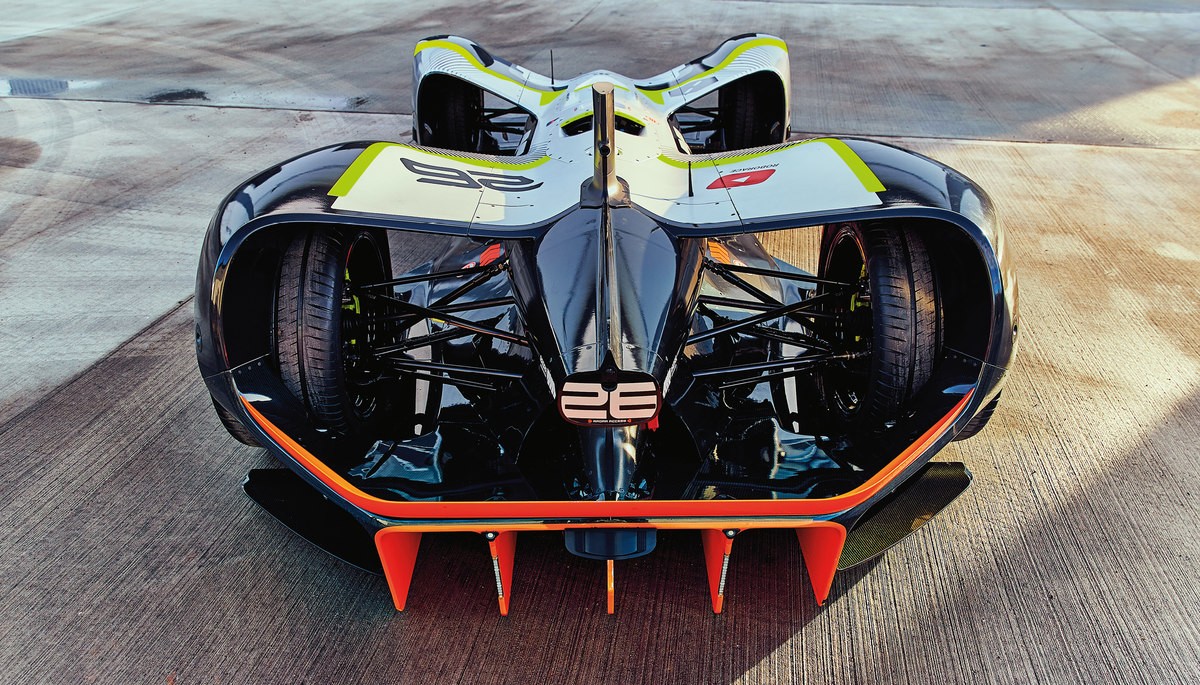
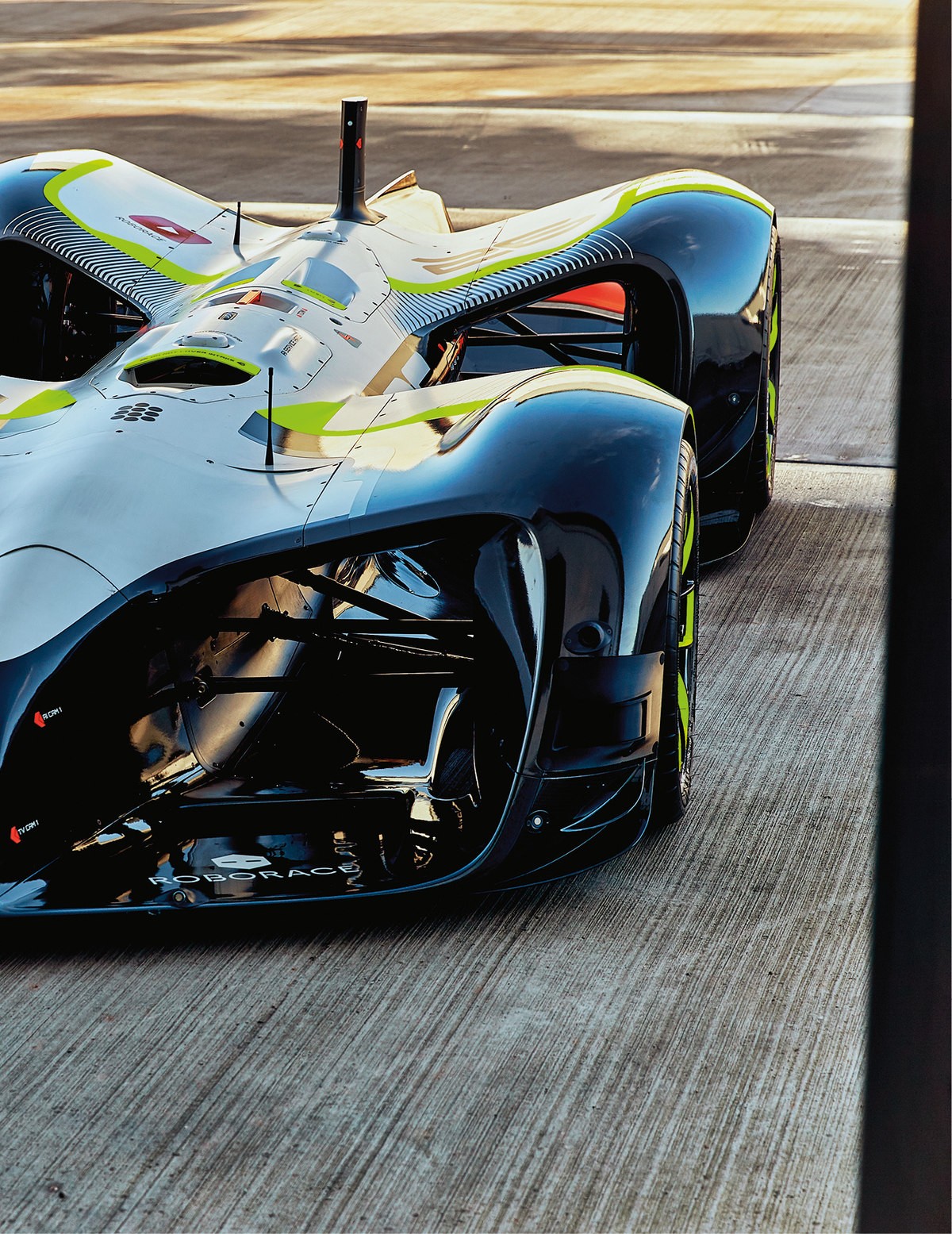
If there was ever a car capable of giving some elbow, it’s the fantastic Robocar. It’s the brainchild of California-based automotive designer Daniel Simon who has already worked for a host of carmakers, including Audi and Bugatti, and created futuristic vehicles for Hollywood movies such as 'Tron: Legacy', 'Oblivion' and 'Star Wars VIII'. The sci-fi influences are unmistakable in the Robocar. With its low-slung posture, it oozes pure power and an eerie, almost extraterrestrial intelligence. “For over a century, people have sat behind the wheel of a car,” says Simon. “That’s why it’s so important for Robocar to stir feelings and elicit an emotional response.” But it’s not just the car’s design that is compelling—so is its technology. One of the highlights is its innovative carbon-fiber monocoque with racecar suspension, which was designed in-house. The battery generates a maximum output of up to 655 kilowatts (almost 900 horsepower). Considering its weight of roughly 1,000 kilograms, that gives it a top speed of about 300 kilometers per hour. An electric motor is fitted to each of the four wheels so that the torque vectoring effect ensures better grip and improved stability. The system is comparable with the e-quattro technology that Audi has developed in recent years. As a result, the Robocar can produce a variable torque output of up to 300 newton-meters at each wheel, which helps the car achieve lap times that are currently two seconds faster than those of a Formula E racing car.
While work on the Robocar hasn’t yet concluded, the hardware is almost done. Despite that, developing the software, which allows the car to detect and analyze its environment at lightning speed, remains a major challenge for the Roborace team. “We’re constantly working on evolving the software and testing the vehicle,” reports Bryn Balcombe. “But because the Robocar has to move, we depend on cameras, GPS, lidar and ultrasonic sensors—of which new models are forever coming onto the market.” Nevertheless, when the team watches the car flying over the Upper Heyford airfield test track at full throttle, many of their struggles are forgotten. “Seeing the Robocar driving autonomously at 200 kilometers per hour—it’s just incredible,” admits Balcombe. What would be even more incredible is several Robocars maxing the speedo and competing against each other on the circuit. “Just imagine we had an AI drivers’ championship and a constructors’ championship with maybe two Robocars from the same team vying for the driver’s title. Remember how exciting that made Formula 1 over the years?” What will happen on the final lap of the drivers’ championship when two Robocars from the same team with an identical number of points on the board enter a corner from opposite directions at 250 kilometers per hour? “At some point, we might want to send commands to the cars from the pits or even orders to the whole team,” enthuses Balcombe. But just as with racing drivers, the Robocar’s artificial intelligence may not necessarily heed those instructions.
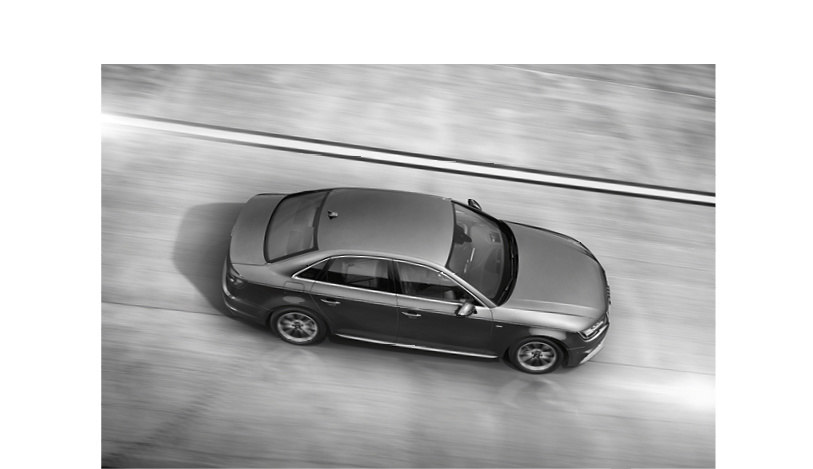
Find out more about the levels of automation on the road to autonomous driving.
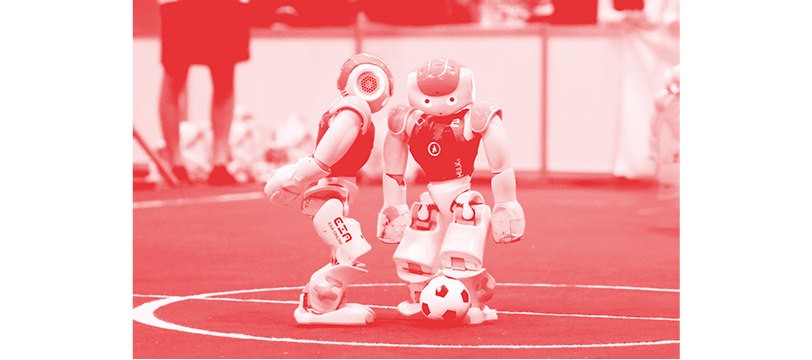
For 20 years now, robots have been competing in a football tournament. Last year, more than 3,500 researchers and students from 40 countries came together in the Japanese town of Nagoya to pit their autonomous robots against each other in the RoboCup.
Further photo credits: Philipp Wente, Axel Hoedt/by Brigitta Horvat, Audi AG & Kyodo News/Getty Images

